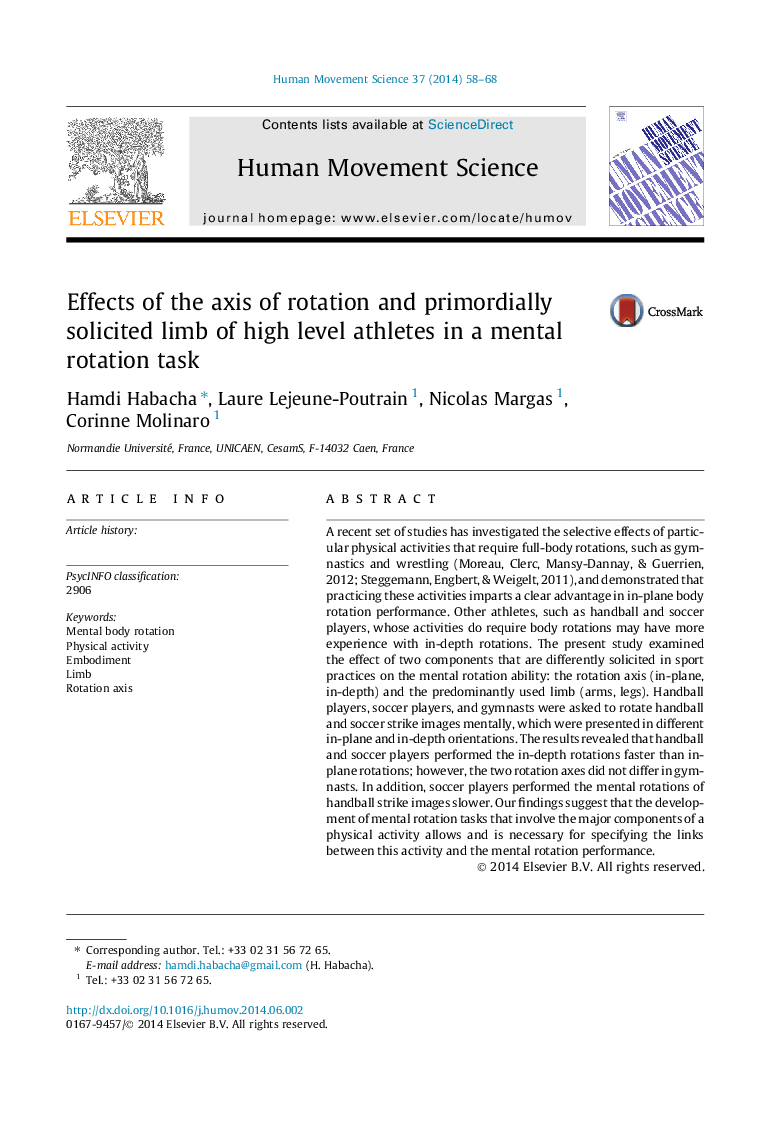| Article ID | Journal | Published Year | Pages | File Type |
|---|---|---|---|---|
| 7292406 | Human Movement Science | 2014 | 11 Pages |
Abstract
A recent set of studies has investigated the selective effects of particular physical activities that require full-body rotations, such as gymnastics and wrestling (Moreau, Clerc, Mansy-Dannay, & Guerrien, 2012; Steggemann, Engbert, & Weigelt, 2011), and demonstrated that practicing these activities imparts a clear advantage in in-plane body rotation performance. Other athletes, such as handball and soccer players, whose activities do require body rotations may have more experience with in-depth rotations. The present study examined the effect of two components that are differently solicited in sport practices on the mental rotation ability: the rotation axis (in-plane, in-depth) and the predominantly used limb (arms, legs). Handball players, soccer players, and gymnasts were asked to rotate handball and soccer strike images mentally, which were presented in different in-plane and in-depth orientations. The results revealed that handball and soccer players performed the in-depth rotations faster than in-plane rotations; however, the two rotation axes did not differ in gymnasts. In addition, soccer players performed the mental rotations of handball strike images slower. Our findings suggest that the development of mental rotation tasks that involve the major components of a physical activity allows and is necessary for specifying the links between this activity and the mental rotation performance.
Related Topics
Life Sciences
Neuroscience
Cognitive Neuroscience
Authors
Hamdi Habacha, Laure Lejeune-Poutrain, Nicolas Margas, Corinne Molinaro,
